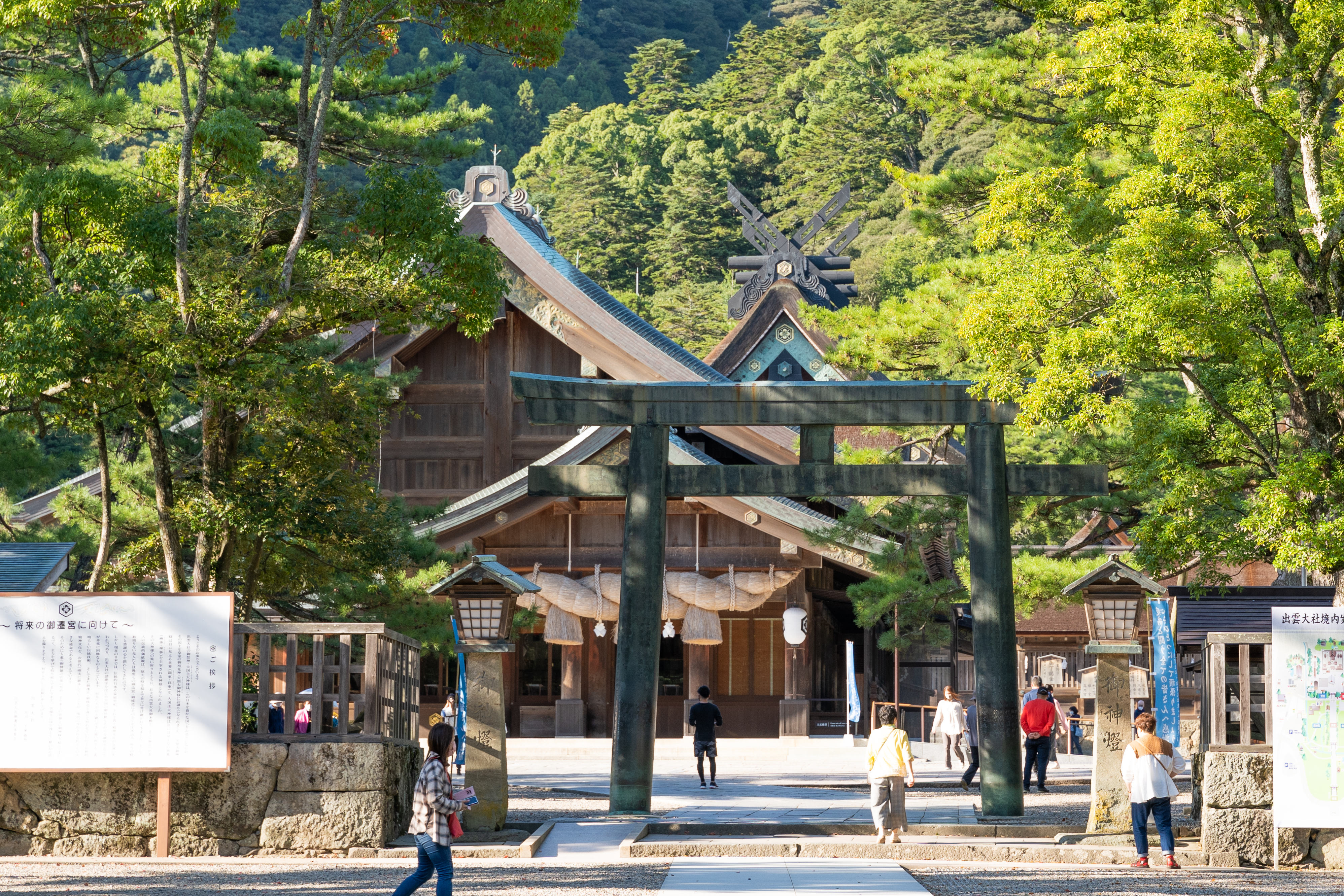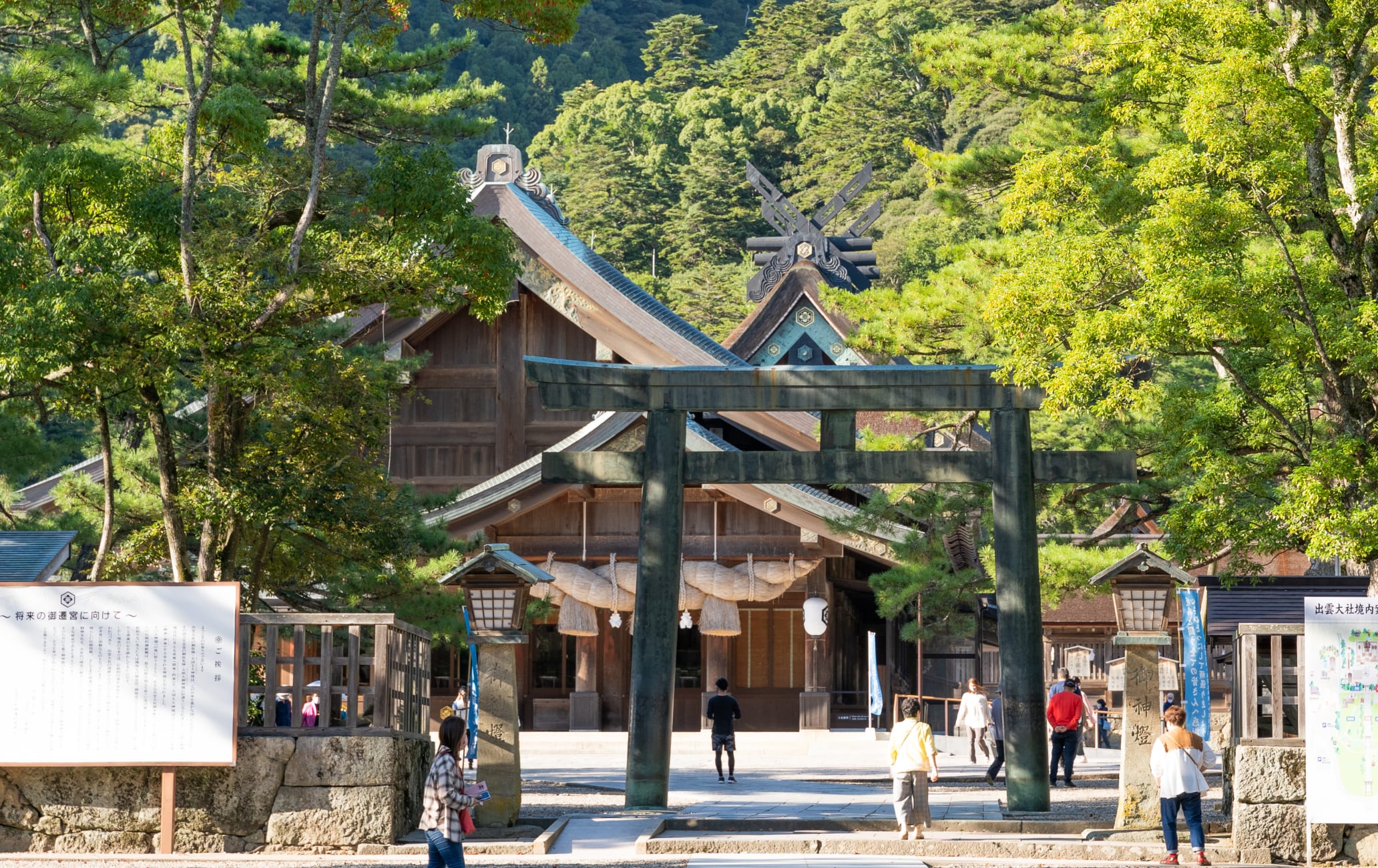Izumo Oyashiro is a traditional shrine believed to be a gathering place for all Japanese deities
According to Japanese legend, Izumo Oyashiro is said to house the deity of marriage, Okuninushi-no-Ookami. This deity creates bonds not just between people, but all living creatures so that they can flourish together. Izumo Oyashiro is also home to one of Japan's large-scaled shimenawa, ropes of straw that are hung in sacred places such as shrines and spiritual landmarks in order to ward away evil.
Don't Miss
- Explore the Izumo Oyashiro complex and its four torii shrine gates
- Walk on the edge of the shrine approach lined with magnificent pine trees, as the center is considered deities' path
- Soganoyashiro, a location within the shrine said to give a sense of strong divine energy
How to Get There
From JR Izumoshi Station, transfer onto the Ichibata bus bound for Izumo Taisha and get off at Seimon-mae.
It is possible to reach Izumo via Izumo Airport from Sapporo, Sendai, Tokyo (Haneda Airport), Nagoya, Osaka, and Fukuoka, and it takes 30 minutes to reach Izumo Oyashiro from the airport by car or direct bus.
Quick Facts
Izumo Oyashiro's main shrine building is a national treasure
The shimenawa rope at Kagura Hall is 13.6 meters long and weighs 5.2 tons
Izumo Oyashiro's main shrine building stands 24 meters tall (but was previously 48 meters)
Japanese deities are said to come together at Izumo Oyashiro in the month of November
Mentions of Izumo Oyashiro date as far back as the Kojiki, Japan's oldest existing compilation of history, traditions, and legends which was created in 712. One such legend claims that Shinto deities from all across Japan gather at Izumo Oyashiro for a meeting called “Kamuhakari,” where they bring people together to ensure their happiness. This occurs during the 10th month of the lunar calendar (roughly the 11th month or November, according to the solar calendar). As all of the gods are gathered in one location, this is known in the Izumo region as Kamiarizuki, a Month of the Gods, while the rest of Japan observes Kannazuki, a Month without Gods.
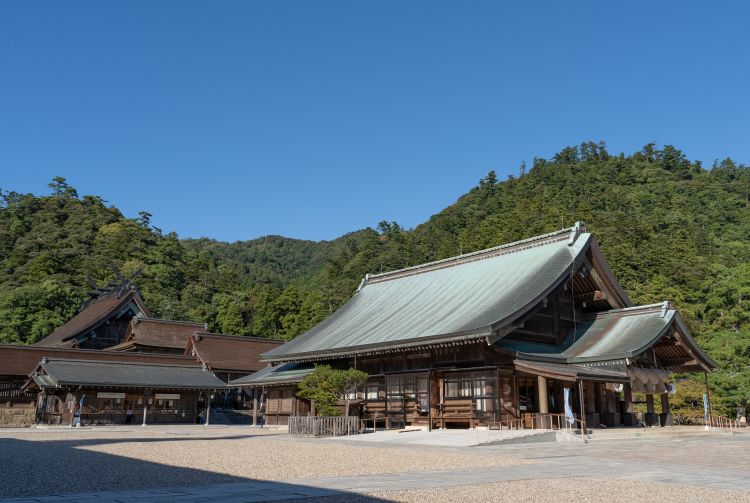
Another legend claims that of the Shinto deities, the grand shrine's host deity Okuninushi no Okami is one of the kindest. Exploring the shrine grounds, visitors are likely to find cute, little white statues of rabbits. These commemorate a local legend where Okuninushi no Okami saved a white rabbit from a potentially grisly fate set upon it by his less altruistic siblings. He delayed his own travels to meet the beautiful princess Yakamihime in Inaba so that he could help the rabbit, giving his mean-spirited siblings a considerable head start at the chance of winning the heart of the lovely maiden. Unfortunately for them, when he finally arrived, his kindness and his warmth were so evident that it was Okuninushi no Okami that Yakamihime ultimately chose in the end.
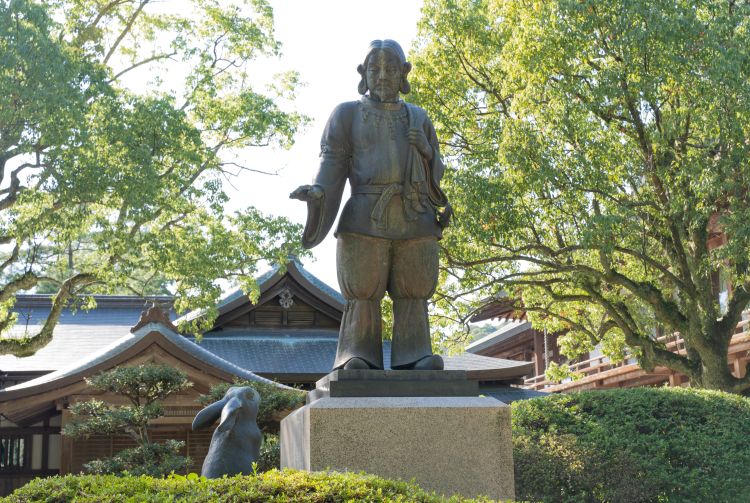
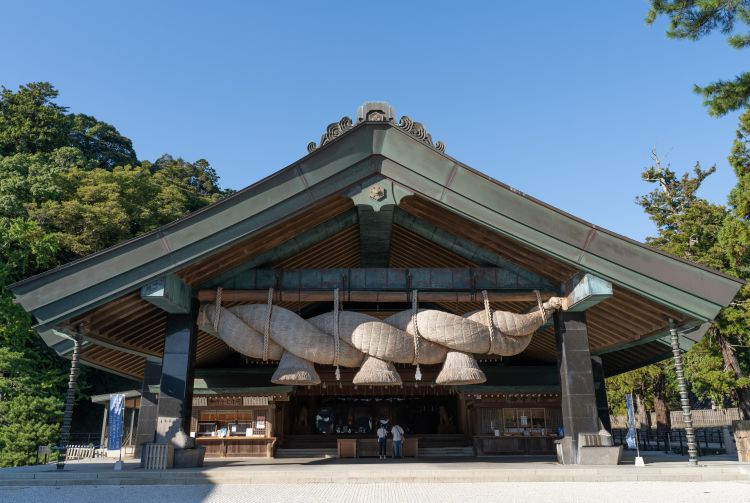
A good-luck spot for those seeking romance and healthy relationships
Those who go to Izumo Oyashiro usually do so in search of positive relationships—making it a popular wedding location for those seeking a traditional Japanese ceremony. However, romance and marriage aren't the only types of relationships that the shrine is known for, with those seeking positive relationships with friends and work colleagues also encouraged to visit.
Izumo Oyashiro also has a slightly different method for paying respects than other shrines. It is common practice at most Japanese shrines to bow twice, clap twice, and then bow once more when paying your respects. However, visitors to Izumo Oyashiro bow twice and then clap four times before the final bow.

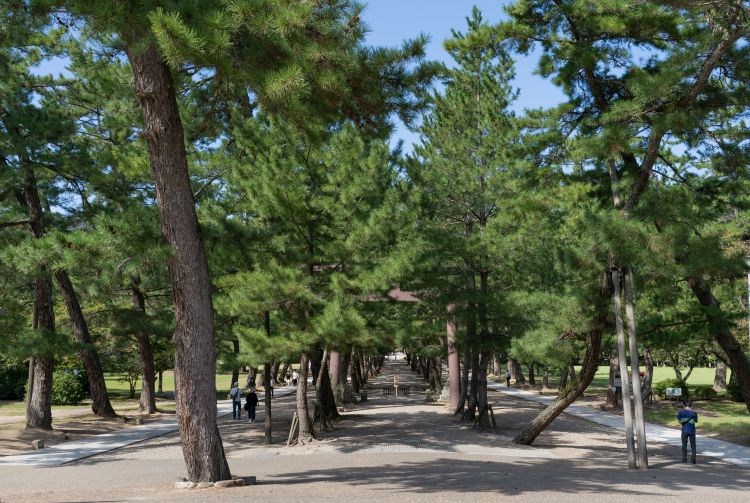
Learn more about Izumo's specialties and history
The approach to the shrine is roughly 700 meters long from Ichi-no-torii to Ni-no-torii, which is lined with numerous souvenir shops and cafes for visitors to stop by. This area is also famous for its Izumo soba noodles, which can be tasted at several restaurants dotted around the grand shrine. Often served in three-tiered containers, the soba is darker in color and served with a black, thick yet sweet soup that really sets it apart from other soba dishes served across Japan.
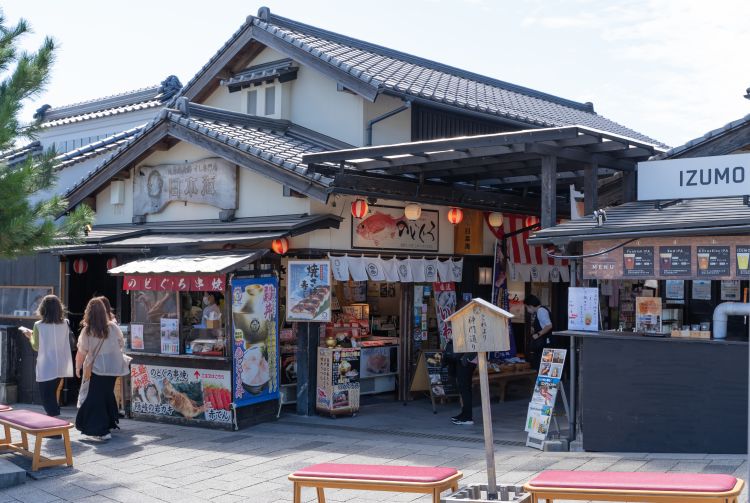
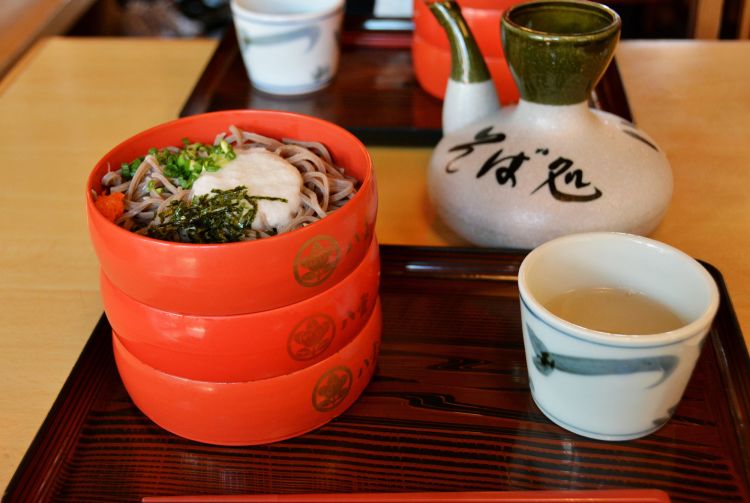
Other worthwhile locations include the Shimane Museum of Ancient Izumo , if you're looking to brush up on your local history; Inasa Beach, to soak in some spirituality at one of Japan's 100 great beaches; and Izumo Hinomisaki Lighthouse , to take in the coastal sealine from the tallest lighthouse in East Asia.









































